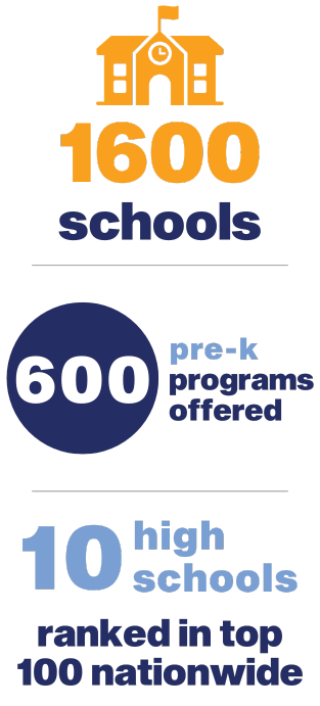Our Classrooms
Make your mark in New York City classrooms. With more than 1,800 schools and a city full of resources, teachers can explore their interests and craft unique opportunities for students.
Spark your passion for urban education
Teaching in New York City demands the best from our teachers—and offers daily possibilities to make a profound difference for students. We serve the largest and most diverse student population in the country, representing 184 languages and dozens of distinctive communities. Our teachers understand our students’ challenges, whether students are new to the country or struggling to read at grade level. They embrace students’ potential, meeting them where they are academically and investing in them personally. It takes dedication, creativity, and an unswerving conviction that all students can succeed.
Make the city your classroom
For teachers energized by constant learning, New York City offers endless enrichment. Teachers can tap dozens of free or inexpensive options at leading cultural institutions, from studying biology at the Bronx Zoo to hearing from World War II survivors at the Japan Society, to going backstage at the Apollo Theater. They can invite luminaries into their classroom, from playwrights to politicians. Teachers can also explore unique career development opportunities with dozens of fellowships and professional development programs, like workshops on teaching history through art at the Museum of the City of New York or classes on teaching botany at the New York Botanical Garden in the Bronx.
Create a community in your school
We believe in collaboration, and our teachers forge personal connections with their students, colleagues and families. All teachers have dedicated time each week to engage with students’ families as true partners. Together, teachers and parents work to build on students’ strengths and address their real-life needs. Teachers can also learn from like-minded peers in their subject area—from biology to bilingual education—and exchange ideas for engaging students in the material. Within our school communities, students and teachers have the support they need to thrive.


